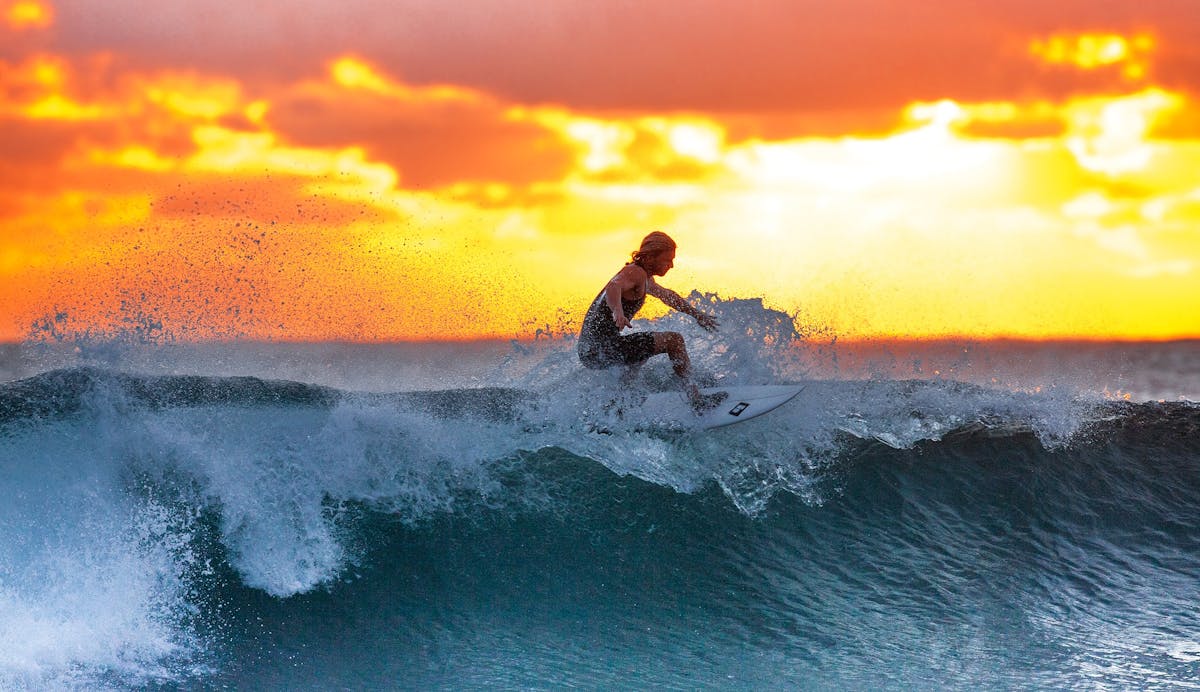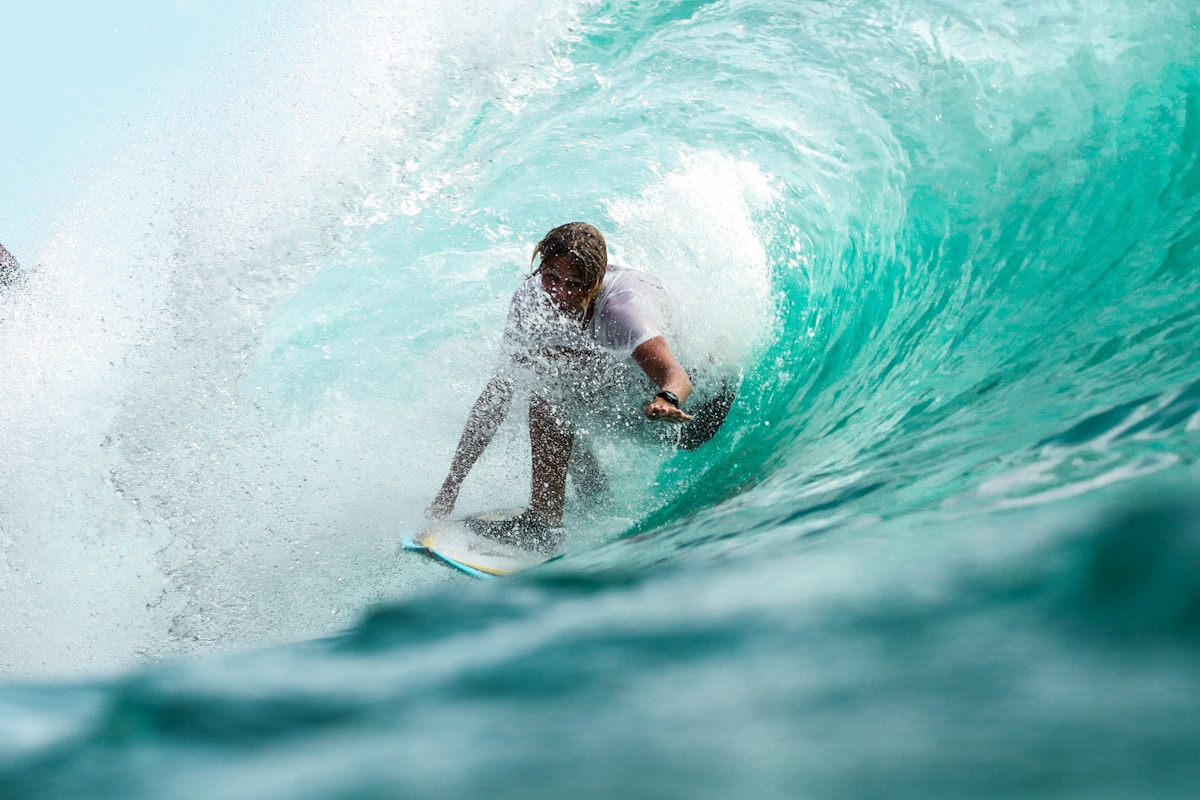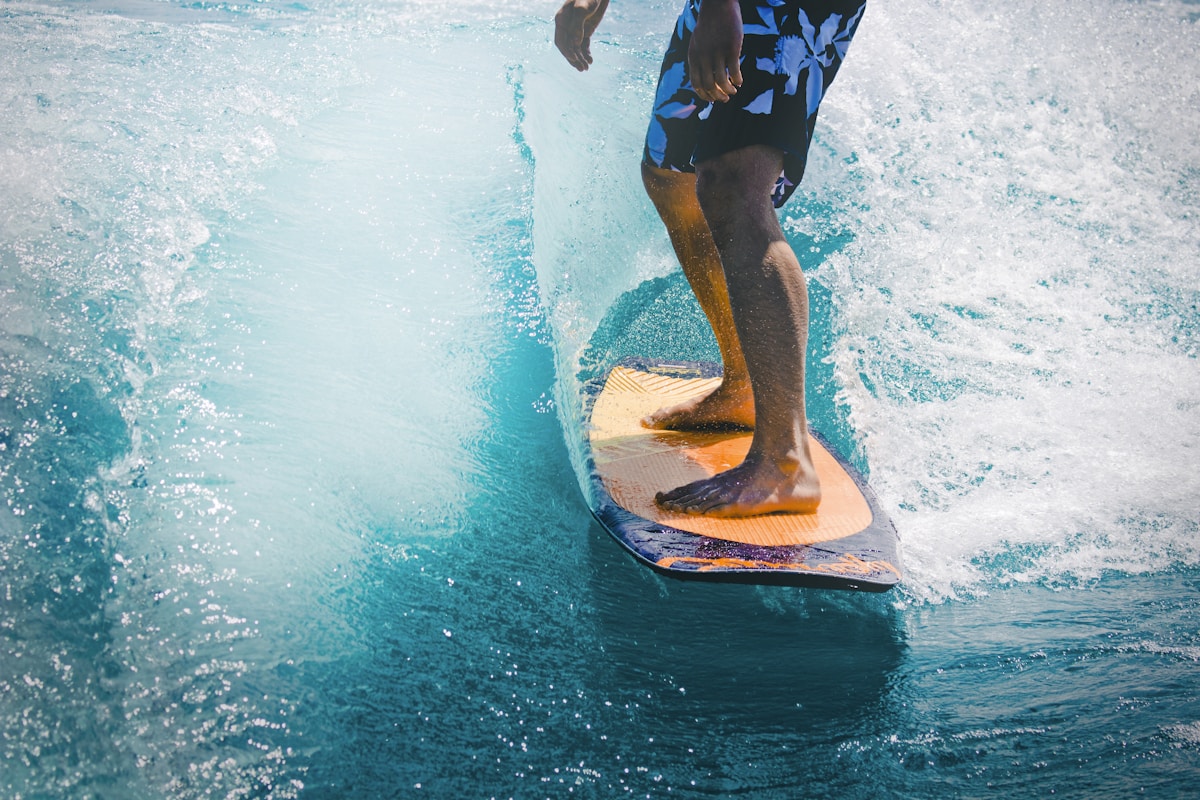Why Sydney is Perfect for Learning to Surf
I learned to surf at Bondi when I first moved to Sydney twelve years ago. I was terrible – got dumped by waves, couldn't pop up, swallowed half the ocean. But the surf schools here are professional, the beaches are forgiving (mostly), and surfing became one of my favorite parts of living in Sydney.
Sydney has consistent waves year-round, excellent surf schools, and beaches suitable for all levels. Whether you're 8 or 80, nervous or confident, there's a surf school and beach that'll work for you. The surf culture here is real – it's not just tourism, it's genuinely part of Sydney life.
For Vietnamese visitors, surfing might seem intimidating. Vietnam doesn't have the same surf culture (Da Nang and Mui Ne have some surf, but it's not mainstream). But Sydney surf schools are used to teaching international students who've never surfed before. You'll be fine.
Best Beginner Surf Beaches in Sydney
Bondi Beach: The Learning Hub
Bondi is where most people learn to surf in Sydney. Multiple surf schools operate here, the waves are usually manageable for beginners, and the vibe is welcoming (despite what you hear about aggressive locals – they're mostly at the south end, beginners surf north end).
Why it's good for learning:
• Consistent waves (not too big, not too small)
• Sandy bottom (no rocks)
• Multiple surf schools competing (good prices, quality instruction)
• Patrolled year-round (safe)
• Easy access from city (bus 333, 380, 381)
Where to surf: North Bondi end is better for beginners. South end (near Icebergs) has more experienced surfers and can be territorial.
Surf schools at Bondi:
• Let's Go Surfing (biggest, most professional)
• Bondi Surf School
• Surf Camp Australia
Manly Beach: The Alternative
Manly is my favorite beach for learning to surf. The waves are generally gentler than Bondi, the beach is wider (more space), and the Northern Beaches vibe is more relaxed.
The ferry from Circular Quay to Manly is part of the experience – your lesson becomes a day trip. Manly Surf School and other operators run excellent beginner programs.
Advantages:
• Gentler waves than Bondi
• Less crowded in lineup
• More space on beach
• Beautiful ferry journey included
Best for: Nervous beginners, families learning together, people who want calmer vibe than Bondi

Maroubra Beach: The Local's Choice
Maroubra gets good surf and is less touristy than Bondi. The south end is better for beginners (north end can get heavy). I surf here regularly because it's less crowded and the locals are generally welcoming if you show respect.
Why consider Maroubra:
• Less crowded than Bondi/Manly
• Good consistent surf
• Authentic local surf culture
• Cheaper lessons (less tourism markup)
Note: Maroubra has reputation as 'rough' (working-class surf culture), but it's actually fine. Just show respect and don't act entitled.
Cronulla Beach: South Sydney Option
Cronulla is Sydney's only beach accessible directly by train from the city. It's got proper local surf culture, multiple breaks, and is less touristy than eastern beaches.
The surf can be bigger than Bondi, but there are protected areas suitable for learning. North Cronulla is generally calmer. Several surf schools operate here.
Best for: People staying in southern Sydney, those wanting authentic local scene
Understanding Surf Lessons: What to Expect
Group Lessons vs Private Lessons
Group Lessons:
• Cost: $70-100 for 2 hours
• Group size: 6-8 people usually
• Pros: Cheaper, social, fun atmosphere
• Cons: Less individual attention, progress slower
• Best for: First-timers, social learners, budget-conscious
Private Lessons:
• Cost: $150-200 for 1-2 hours
• Just you (or you + friend/partner)
• Pros: Personalized instruction, faster progress, flexible schedule
• Cons: More expensive
• Best for: Serious learners, nervous beginners wanting extra attention, people with specific needs
I did group lessons first (cheaper, social), then private lessons after a few months to improve specific skills. Both have value.
What Happens in a Surf Lesson?
Having taught Vietnamese family members to surf, here's what to expect:
On the beach (20-30 mins):
• Safety briefing (rips, marine hazards, surf conditions)
• Equipment explanation (board, wetsuit, leash)
• Pop-up technique practice on sand
• Wave selection and positioning
• Surf etiquette rules
In the water (60-90 mins):
• Instructor pushes you into waves (they do the hard work)
• You practice popping up and riding
• Instructor gives feedback and tips
• Multiple attempts (expect to fall a lot – everyone does)
• By end of lesson, most people catch at least a few waves
After lesson:
• Debrief, tips for practicing
• Equipment return
• Usually beach shower to rinse off
Most people stand up at least once in their first lesson. Some stand up multiple times. A few struggle (usually fitness or timing issues). Everyone falls constantly – that's normal.
Surf Equipment: What You Need
For Your First Lessons
Surf schools provide everything:
• Softboard (foam board – safe for learning)
• Wetsuit (even in summer – water can be cold)
• Leg rope (keeps board attached to you)
• Rashguard (under wetsuit to prevent chafing)
You just need: swimmers, towel, sunscreen, water bottle.
If You Continue Surfing
After 5-10 lessons, you might want your own gear:
Surfboard:
• Beginner: Softboard or mini-mal (8-9 feet long)
• Cost: $200-600 new, $100-300 used
• Don't buy a shortboard yet (too hard for beginners)
Wetsuit:
• Sydney needs wetsuits year-round (water 17-24°C)
• Summer: 2mm springsuit ($80-150)
• Winter: 3/2mm or 4/3mm full suit ($150-400)
• Buy from surf shops: Manly Surf Shop, Bondi Surf Co, Cronulla Surf
Accessories:
• Leg rope: $30-50
• Wax: $5-10 (keeps you from slipping off board)
• Board bag: $50-100 (protects board)
• Roof racks: $100-300 if driving to beaches
Total startup cost: $300-800 depending on new vs used
Surf Etiquette: The Essential Rules
Surf culture has rules. Break them and you'll get yelled at (or worse). Follow them and you'll be welcomed.
1. Right of Way: Surfer closest to the peak (where wave breaks first) has priority. Don't 'drop in' on someone already riding.
2. Don't Snake: Don't paddle around someone to get priority position. Wait your turn.
3. Paddle Wide: When paddling out, go around the break (not through where people are surfing).
4. Hold Your Board: Don't let your board go flying and hit people. Hold on when duck diving or wiping out.
5. Respect Locals: If you're new to a break, don't paddle straight to the best spot. Earn respect first.
6. Share Waves: Don't hog every wave. Let others have turns.
7. Apologize: If you mess up (drop in on someone, cut them off), say sorry immediately.
I've broken these rules accidentally as a beginner and got yelled at. Learn from my mistakes – follow surf etiquette from day one.
Best Surf Schools in Sydney
Let's Go Surfing (Bondi & Maroubra)
Biggest and most established. Professional instructors, excellent safety record, good equipment. They teach thousands of beginners yearly.
Cost: $95 group lesson, $195 private
Locations: Bondi, Maroubra
What I like: Very professional, good for nervous beginners, multilingual instructors
Manly Surf School
Based at Manly, running lessons since 1997. Smaller operation than Let's Go Surfing but excellent instruction. Good for people wanting more personal attention.
Cost: $85 group, $180 private
Best for: Manly location preference, calmer vibe
Surf Camp Australia
Offer multi-day surf camps and single lessons. Good for people wanting intensive learning (3-5 days).
Bondi Surf School
Small operation, locals running it, good vibes. Less corporate than Let's Go Surfing.
Choosing a School
Honestly, all major Sydney surf schools are good. Choose based on:
• Location preference (Bondi vs Manly vs Maroubra)
• Price
• Vibe (corporate vs small operation)
• Instructor languages (some schools have Asian-speaking instructors)
When to Surf: Seasons & Conditions
Summer (Dec-Feb):
• Smaller waves (good for learning)
• Warmer water (20-24°C)
• More crowded
• Best for: Beginners, nervous learners
Autumn (Mar-May):
• Good waves, not too big
• Water still warm (19-22°C)
• Less crowded
• Best conditions overall
Winter (Jun-Aug):
• Bigger waves (more challenging)
• Cold water (17-19°C)
• Need good wetsuit
• Best for: Experienced surfers, hardcore learners
Spring (Sep-Nov):
• Waves building
• Water warming up (18-21°C)
• Good learning conditions
• Less crowded than summer
For first lessons, I recommend summer or autumn – warmer water, smaller waves, less intimidating.
Surf Safety for Beginners
Surfing is generally safe if you're sensible:
Swim ability: You should be a confident swimmer. If you're not comfortable in ocean, take swimming lessons first.
Rip currents: Read about rip safety. If caught in rip while surfing, paddle parallel to beach.
Marine hazards: Sharks are rare. Bluebottles (jellyfish) more common – avoid surfing after onshore winds in summer.
Board safety: Your board can hurt you or others. Always hold on, be aware of your board's position.
Sun protection: Zinc sunscreen on face, SPF 50+ on body, rashguard under wetsuit.
Know your limits: If waves look too big, don't go out. There's no shame in sitting one out.
Progression Path: After Your First Lessons
Lessons 1-3: Learning to stand up, catch whitewater (broken waves)
Lessons 4-10: Catching unbroken waves, basic turns, wave selection
After 10+ lessons: Consider buying equipment, practicing regularly, maybe graduating to shortboard eventually
Ongoing improvement: Join surf clubs, get occasional coaching, surf regularly (practice is key)
I've been surfing for 10+ years and still consider myself intermediate. Surfing takes time to master – that's part of the appeal.
Cost Breakdown: Learning to Surf
Minimum (just trying it):
• 1 group lesson: $90
• Total: $90
Getting started (5 lessons):
• 5 group lessons: $450
• Total: $450
Becoming a surfer (with equipment):
• 10 lessons: $900
• Used softboard: $200
• Used wetsuit: $100
• Accessories: $100
• Total: $1,300
Compared to many sports, surfing is relatively affordable once you have equipment. Ongoing costs are minimal (wax, occasional wetsuit replacement).
Vietnamese Visitors: Cultural Notes
Swimming ability: Many Vietnamese people I teach aren't strong ocean swimmers. Be honest about your ability. Surf schools can accommodate.
Language: Most instructors speak only English, but instructions are demonstrated physically. Some schools have Asian instructors.
Body exposure: Wetsuits cover most of body. Women can wear rashguards underneath for extra modesty if preferred.
Physical fitness: Surfing is tiring. You'll use muscles you didn't know existed. That's normal.
Patience: Vietnamese learners I've taught often expect quick progress. Surfing takes time. Be patient with yourself.
Community: Surf culture is welcoming to beginners who show respect and follow etiquette. Don't be intimidated.
Beyond Lessons: Joining Surf Culture
Surf clubs: Bondi, Manly, Cronulla all have surf clubs. Some offer social membership (not just competitive).
Surf shops: Hang out at local surf shops. You'll learn about conditions, meet people, absorb culture.
Online resources:
• Coastalwatch: Surf forecasts and cams
• Swellnet: Surf reports
• Surfline: International surf info
Events: Watch surf competitions at beaches. You'll learn by observing good surfers.
Is Surfing Worth Learning?
For me, absolutely. Surfing connected me to the ocean, gave me fitness, introduced me to wonderful people, and gave me a meditation practice (paddling out at sunrise is genuinely meditative).
It's challenging – you'll get dumped, swallow seawater, feel exhausted, maybe get yelled at for breaking etiquette. But catching your first real wave, riding it to shore, feeling that glide – it's magical.
For Vietnamese visitors, surfing might be outside your comfort zone. But it's a genuinely Australian experience. Even if you only do one lesson, you'll have tried something new and experienced Sydney beach culture in an authentic way.
Give it a go. Book a lesson at Bondi or Manly, show up with an open mind, and see if surfing clicks for you. Worst case, you'll have a fun story. Best case, you'll discover a new passion.
See you in the water.






















